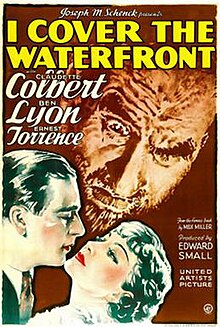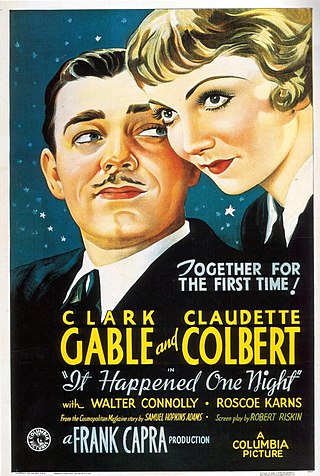
It Happened One Night is a 1934 pre-Code American romantic comedy film with elements of screwball comedy directed and co-produced by Frank Capra, in collaboration with Harry Cohn, in which a pampered socialite tries to get out from under her father's thumb and falls in love with a roguish reporter. The screenplay by Robert Riskin is based on the August 1933 short story "Night Bus" by Samuel Hopkins Adams, which provided the shooting title. Classified as a "pre-Code" production, the film is among the last romantic comedies created before the MPPDA began rigidly enforcing the 1930 Motion Picture Production Code in July 1934. It Happened One Night was released just four months prior to that enforcement.

The Smiling Lieutenant is a 1931 American pre-Code musical comedy film directed by Ernst Lubitsch, starring Maurice Chevalier, Claudette Colbert and Miriam Hopkins, and released by Paramount Pictures.
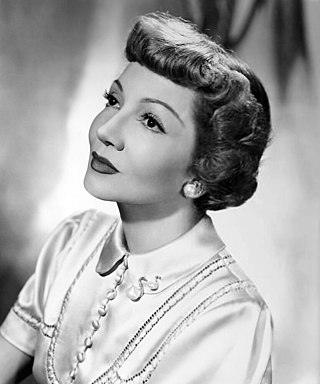
Claudette Colbert was an American actress. Colbert began her career in Broadway productions during the late 1920s and progressed to films with the advent of talking pictures. Initially contracted to Paramount Pictures, Colbert became one of the few major actresses of the period who worked freelance, independent of the studio system. She won the Academy Award for Best Actress for It Happened One Night (1934), and received two other Academy Award nominations during her career. Colbert's other notable films include Cleopatra (1934), The Palm Beach Story (1942) and Since You Went Away (1944).

The Big Pond is a 1930 American Pre-Code romantic comedy film based on a 1928 play of the same name by George Middleton and A.E. Thomas. The film was written by Garrett Fort, Robert Presnell Sr. and Preston Sturges, who provided the dialogue in his first Hollywood assignment, and was directed by Hobart Henley. The film stars Maurice Chevalier and Claudette Colbert, and features George Barbier, Marion Ballou, and Andrée Corday, and was released by Paramount Pictures.

It's a Wonderful World is a 1939 American screwball comedy starring Claudette Colbert and James Stewart, and directed by W. S. Van Dyke.
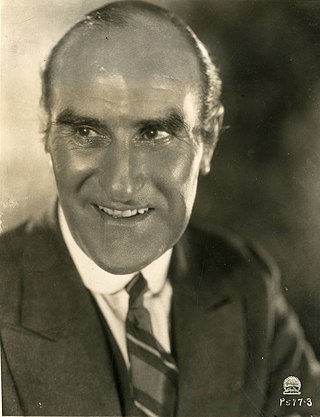
Ernest Torrence was a Scottish film character actor who appeared in many Hollywood films, including Broken Chains (1922) with Colleen Moore, Mantrap (1926) with Clara Bow and Fighting Caravans (1931) with Gary Cooper and Lili Damita. A towering figure, Torrence frequently played cold-eyed and imposing villains.

James Cruze was a silent film actor and film director.

Three Came Home is a 1950 American World War II film directed by Jean Negulesco, based on the memoirs of the same name by writer Agnes Newton Keith. It depicts Keith's life in North Borneo in the period immediately before the Japanese invasion in 1942, and her subsequent internment and suffering, separated from her husband Harry, and with a young son to care for. Keith was initially interned at Berhala Island near Sandakan, North Borneo but spent most of her captivity at Batu Lintang camp at Kuching, Sarawak. The camp was liberated in September 1945.
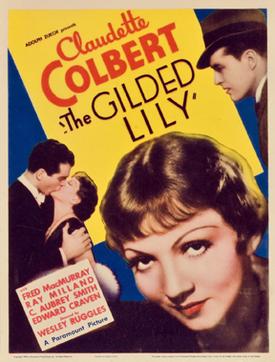
The Gilded Lily is a 1935 American romantic comedy film directed by Wesley Ruggles and starring Claudette Colbert, Fred MacMurray, Ray Milland, and C. Aubrey Smith. The production's screenplay, written by Claude Binyon, is about a stenographer who becomes a famous café entertainer courted by an English aristocrat and an American newspaper reporter. Released by Paramount Pictures in the United States on January 25, 1935, the film is one of the English language films chosen by the National Board of Review for its top-10 list of 1935. The Gilded Lily is also the first of seven films in which Claudette Colbert and Fred MacMurray costar.

The Secret Heart is a 1946 American drama film directed by Robert Z. Leonard and starring Claudette Colbert, Walter Pidgeon and June Allyson.

Torch Singer is a 1933 American pre-Code Paramount Pictures film directed by Alexander Hall and George Somnes and starring Claudette Colbert, Ricardo Cortez, David Manners and Lyda Roberti. The screenplay was written by Lenore J. Coffee and Lynn Starling, based on the short story Mike by Grace Perkins, which was published in Liberty magazine. It was released on DVD on April 7, 2009, and by itself on August 5, 2014.
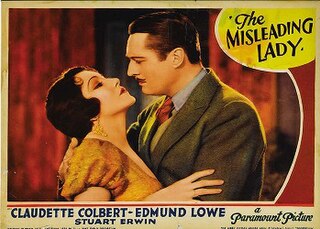
The Misleading Lady is a 1932 American pre-Code comedy film directed by Stuart Walker, and starring Claudette Colbert and Edmund Lowe. The film is based on the 1913 Broadway play by Charles W. Goddard and Paul Dickey. It is also a remake of the 1920 Metro silent film original which starred Bert Lytell and Lucy Cotton, also based on the play.
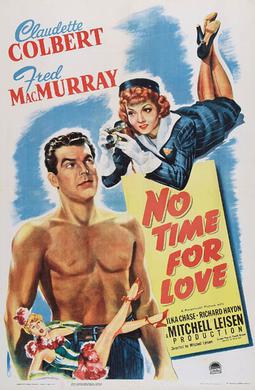
No Time for Love is a 1943 American romantic comedy film produced and directed by Mitchell Leisen and starring Claudette Colbert and Fred MacMurray. Written by Claude Binyon, Robert Lees, and Frederic I. Rinaldo, the film is about a sophisticated female photographer assigned to photograph the tough "sandhog" construction workers at a tunnel project site. After saving one of the sandhogs from a fatal accident, she becomes attracted to this cocky well-built man they call Superman. Unsettled by her feelings, she hires the man as her assistant, believing that her attraction to him will diminish if she spends time with him. Their time together, however, leads to feelings of love, and she struggles to overcome her haughtiness and make her true feelings known.
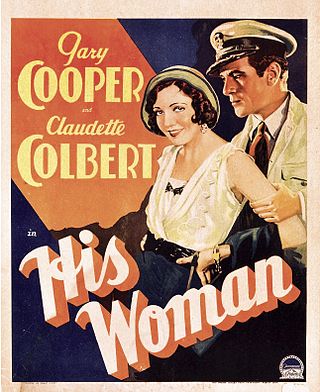
His Woman is a 1931 American pre-Code romance drama film directed by Edward Sloman and starring Gary Cooper and Claudette Colbert. Based on the novel His Woman by Dale Collins, the story is about a tough sea captain who discovers a baby aboard his freighter and hires a tramp, masquerading as a missionary's daughter, to care for the infant on their passage to New York.

For the Love of Mike is a 1927 American silent romantic drama film. Directed by Frank Capra, it starred Claudette Colbert and Ben Lyon. It is now considered to be a lost film.
"The Comedian" is a 1957 live television drama written by Rod Serling from a novella by Ernest Lehman, directed by John Frankenheimer, and starring Mickey Rooney, Edmond O'Brien, Kim Hunter, Mel Tormé and Constance Ford.

Roscoe Karns was an American actor who appeared in nearly 150 films between 1915 and 1964. He specialized in cynical, wise-cracking characters, and his rapid-fire delivery enlivened many comedies and crime thrillers in the 1930s and 1940s.
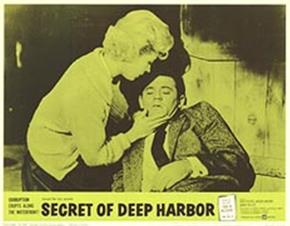
The Secret of Deep Harbor is a 1961 film directed by Edward L. Cahn, and starring Ron Foster and Merry Anders.

John Melvin Bleifer was an American actor whose career began at the end of the silent film era, and lasted through the mid-1980s. He appeared in feature films and film serials, and in a number of television series and miniseries. Bleifer also acted on stage, and appeared in several Broadway productions.
